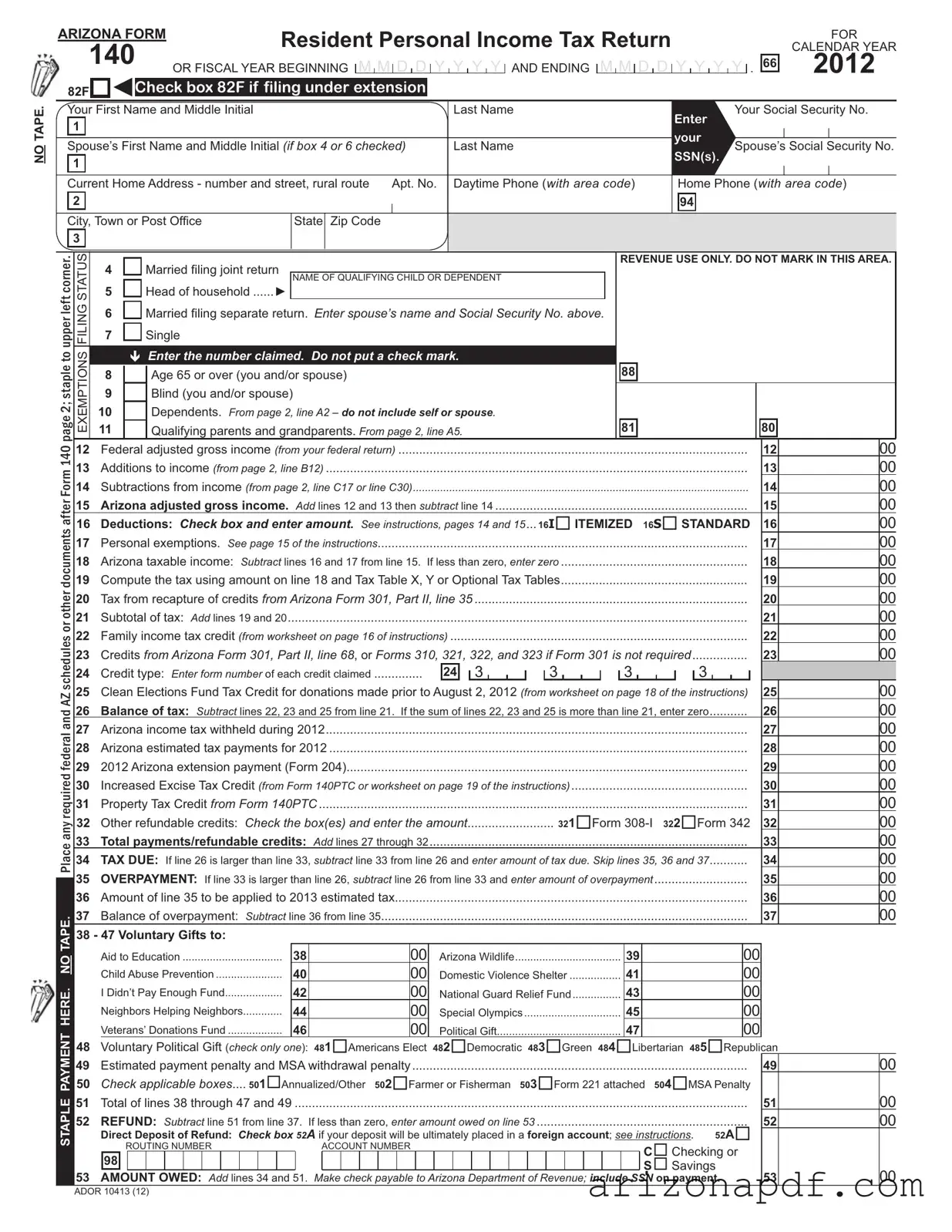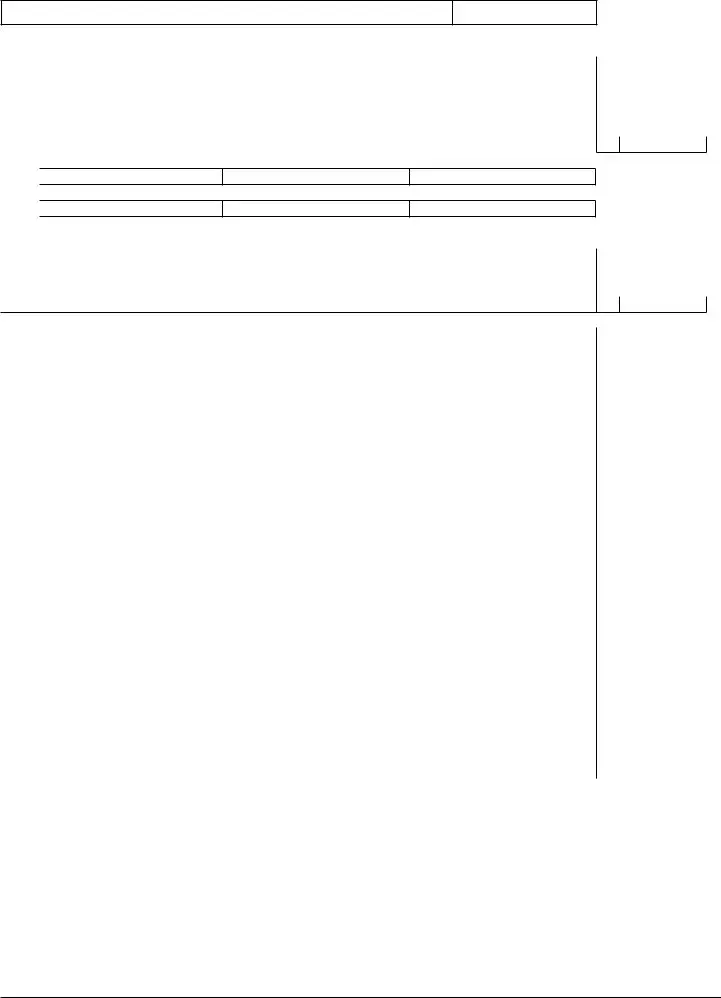The Arizona Form 140 is quite similar to the 1040 Form used for federal tax returns in the United States. Both forms are utilized by individuals to report their yearly income and calculate the taxes owed to the government. They cover various types of income, deductions, and credits available to the taxpayer, making them comprehensive tools for income tax reporting. The 1040 Federal Form, like the Arizona Form 140, allows for itemized or standard deductions, personal exemptions, and includes sections for tax credits and payments throughout the year.
Arizona Form 140PTC, Property Tax Refund (Credit) Claim, shares similarities with Form 140 in the context of offering specific tax credits. While Form 140 covers a broad range of income, deductions, and credits, Form 140PTC focuses on providing a credit for individuals who pay property taxes or rent on their primary residence in Arizona. Both forms aim to reduce the taxpayer's financial burden through credits, but Form 140PTC specifically targets property tax relief.
The Arizona Form 321, Credit for Contributions to Qualifying Charitable Organizations, is another document that parallels the Arizona 140 form in its provision for tax credits. While Form 140 includes various credits, including those for donations to certain funds, Form 300 provides a structured way to claim credits for donations made to certified charitable organizations. Both forms work to incentivize and acknowledge taxpayers' contributions to eligible entities, thereby reducing their taxable income through specific credit sections.
The Arizona Form 322, Credit for Contributions Made or Fees Paid to Public Schools, is similar to Form 140 because it offers tax incentives for certain types of donations. Form 140 allows for a broad range of credits including those related to education, but Form 322 specifically targets contributions to public schools for support of eligible activities, programs, or purposes. This form enables taxpayers to directly influence and contribute to the quality of education while receiving a credit against their income tax, aligning with the concept of incentivized giving found in Form 140.
Form 323, Credit for Contributions to School Tuition Organizations, aligns with Arizona Form 140 in the realm of educational contributions but focuses on donations to entities that provide scholarships or tuition grants. Similar to Form 140's sections on tax credits, Form 323 offers Arizona taxpayers the opportunity to support educational access and diversity through financial contributions, directly reducing their state tax liability by the amount donated up to allowable limits.
Arizona Form 301, Nonrefundable Individual Tax Credits and Recapture, is intricately related to Form 140 in dealing with the detailed accounting of nonrefundable tax credits. While Form 140 includes lines for claiming various tax credits, Form 301 provides the framework for calculating those credits in more detail, ensuring that taxpayers maximize their eligible benefits while complying with state tax laws.
Form 204, Application for Filing Extension, is connected to Arizona Form 140 as it affects the filing timeline for the resident personal income tax return. Taxpayers who anticipate needing more time to gather documents or complete their return accurately use Form 204 to request an extension, directly impacting the due date for Form 140 without incurring penalties for late filing.
The Arizona Form 140PY, Part-Year Resident Personal Income Tax Return, is tailored to individuals who have lived in Arizona for only part of the year. Form 140 and 140PY are similar in their function of calculating income tax owed to the state, but the 140PY accommodates the unique situation of part-year residents by prorating income, deductions, and credits based on the duration of Arizona residency.
The Arizona Form 140NR, Nonresident Personal Income Tax Return, addresses the tax obligations of individuals who earned income in Arizona but are not residents. The form is similar to the Arizona 140 form in the types of income, deductions, and credits it covers. However, it is specifically designed for nonresidents, allowing them to report only the income sourced from Arizona and claim related expenses against that income.
Lastly, the Arizona Form 140ES, Individual Estimated Tax Payment, is associated with Form 140 in that it deals with the prepayment of taxes due. Taxpayers who anticipate owing $1,000 or more when filing their Arizona Form 140 use Form 140ES to make quarterly estimated tax payments throughout the year to avoid underpayment penalties. Both forms are integral parts of a taxpayer’s annual fiscal responsibilities to the state of Arizona.


